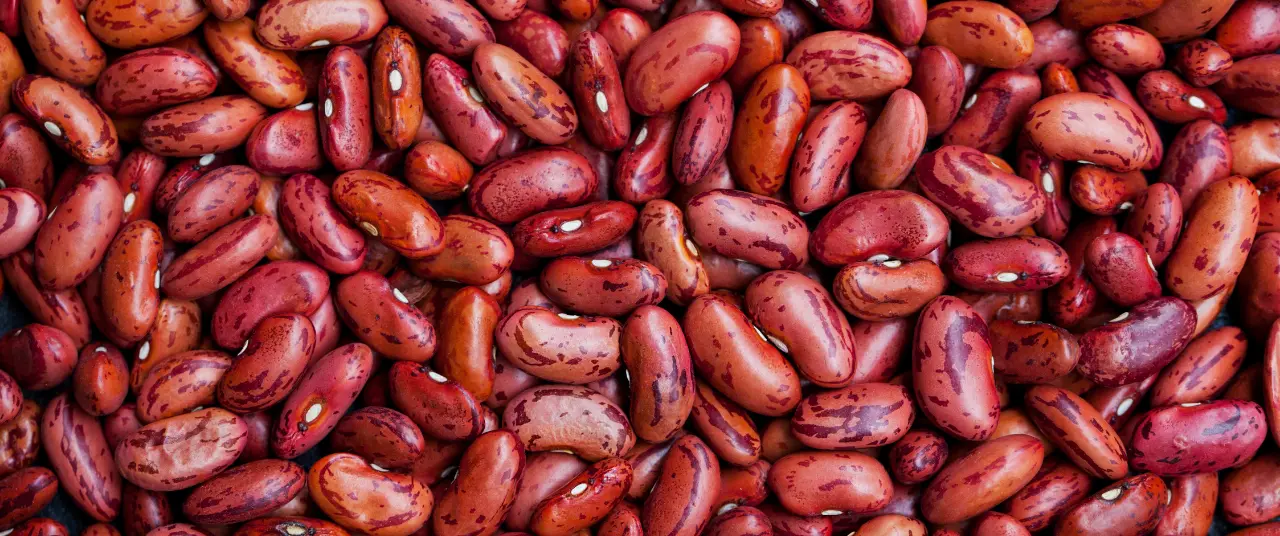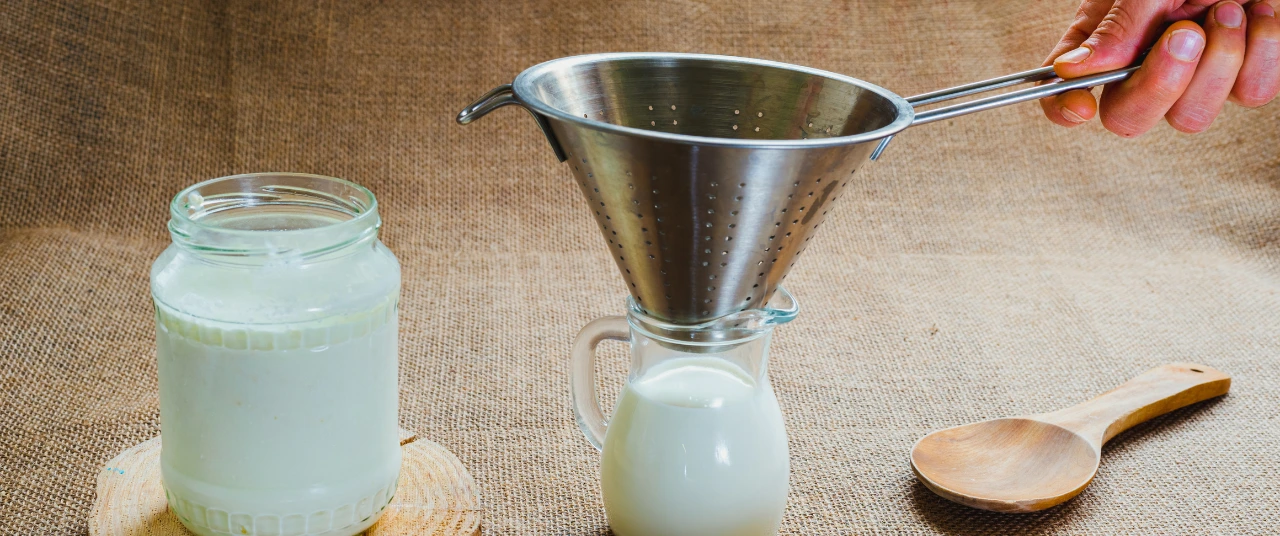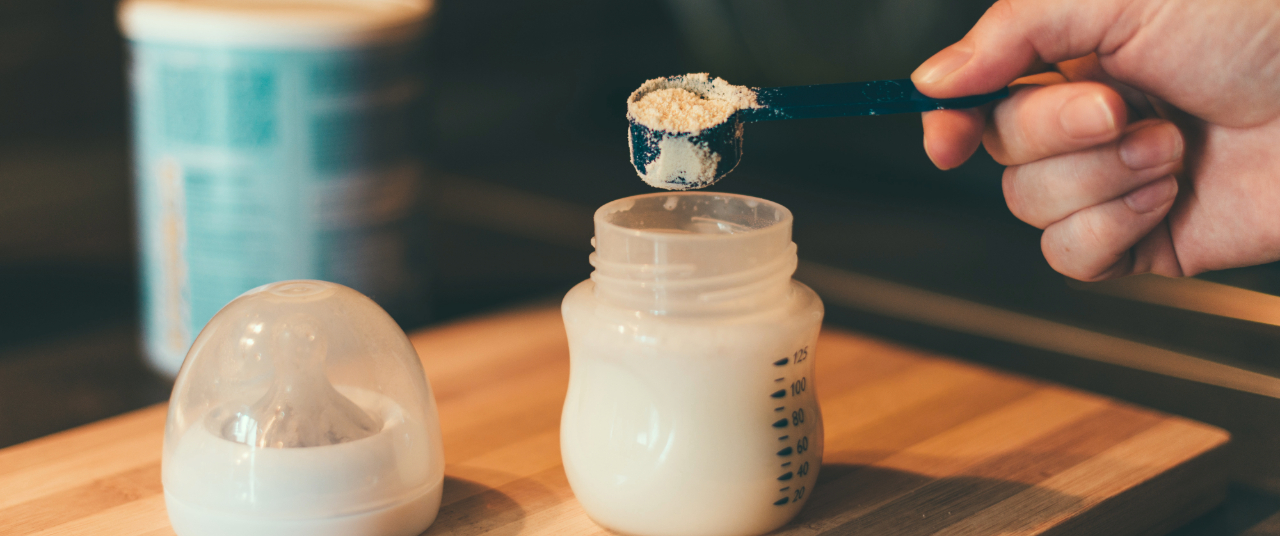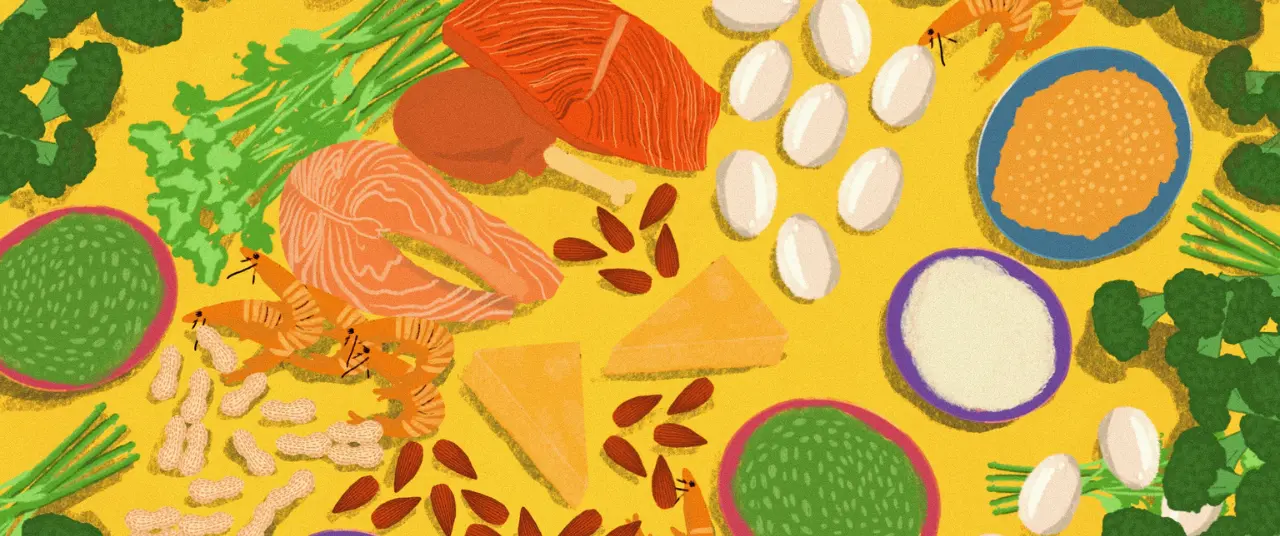Foods, goals, activity: a simple formula for a protein-rich diet






Protein is the talk of the town. A simple log in to your social media is all it takes to be introduced to a myriad of protein-forward fitness content—from discussions on which supplement is the best for you, to quick recipes that pack at least 20g of this nutrient. College canteens are keen on serving protein bars to their students, and you’re sure to find a protein-packed alternative to your favourite treat at the grocery store. The message is clear: you can’t ignore protein if you wish to be healthy.
Most Indian nutritionists agree that India’s staple diet is primarily plant-based and protein-deficient. A recent study discovered that over two-thirds of Indian households are consuming less protein than required. Health enthusiasts, gym buffs, and athletes are encouraged to rack up at least 100 g of protein per day to improve their physique, but the body also appreciates moderation. Individuals with medical conditions need to be even more careful with their intake. Consuming more protein than you can handle has its repercussions.
Hence, it's essential to understand the intricacies of this powerful nutrient. How much protein should you really be having?
What’s so great about protein?
Protein is considered an all-stop nutrition god for primarily three reasons: it builds and repairs muscles, boosts overall health, and is usually effective when paired with the goal of losing weight. The human body has more than 20,000 proteins-coding genes, and each protein serves a distinctive purpose. Essential components like enzymes, haemoglobins, hormones, muscles, and keratin that constitute our skin and hair are made up of protein.
Protein manages the wear and tear in our body. When we exercise, there are microtears in our muscles, which the protein fixes. It builds muscles.
When we consume protein, it is broken down into amino acids at the time of digestion, which act as the building blocks of the body. Dr Krutuja Hukeri, a sports and clinical nutritionist based in Mumbai, elaborates, “Protein manages the wear and tear in our body. When we exercise, there are microtears in our muscles, which the protein fixes. It builds muscles."
Also read: Meal prep: How Indian kitchens can optimise time, taste
Protein is also considered a wonder for weight loss. It increases metabolism and keeps one satiated for longer. Protein is also responsible for regulation of hormones, a few of which happen to be weight-regulating. It reduces your hunger and thus, can decrease calorie intake. Dr Hukeri further brings forth the nutrient’s significant contribution in maintaining and improving the body’s immunity. Antibodies are made up of protein and help fight off viruses and bacteria.
Dr Deepika Vasudevan, the founder of Bengaluru-based Nutrifuel, even asserts that growing children and adults require 1.2 g per kg of their body weight, per day, to help with key developments in the body. However, the specific amount that every person requires differs based majorly on our activity levels.
According to the Mayo Clinic, protein should make up 10-35% of our daily calorie intake. The Indian Council of Medical Research (ICMR) recommends that individuals should consume 0.83 g per kg of their body weight, every day. Keeping in line with this, nutritionists recommend that sedentary individuals consume about 0.8 g per kg of their body weight. Whereas an active individual is recommended to consume between 1 to 1.2 g per kg of their body weight. This is a roughly calculated figure; it is, of course, best recommended to consult a dietitian.
Furthermore, it is important to take into account any preexisting medical conditions. Dr Vasudevan adds, “For instance, if someone has a kidney infection, we advise them to consume the bare minimum quantity of protein, which would be around 20 g. If they are on dialysis, they can consume more; otherwise, the kidney will not be able to metabolise the protein.”
How much protein is too much protein?
Clearly, protein is necessary: aside from low immunity and weak muscles, not meeting your protein requirements can lead to inflammation of the digestive tract and cause your metabolism to slow down. But overdoing it also has its downsides. Long-term overconsumption of protein is noted to have caused intestinal discomfort, dehydration, and liver and kidney injuries, to name a few. Exponentially increasing protein intake is known to cause bloating and increased body heat levels. The key here is to regulate your intake and not ingest any more than 2g per kg of your body weight in a day.
Doctors explain that excessive consumption of protein, specifically animal protein, increases the level of cholesterol and saturated fat in our body. This increase in turn predisposes us to heart disease, kidney damage, and atherosclerosis, which is a build-up of fats and other substances in the arteries, affecting blood circulation. Others have shed light on an increase in gut dysbiosis: an imbalance in our gut health, which affects nutrient absorption and then puts our health at risk.
Dr Hukeri is of the opinion that it is not protein that is the problem, but merely our approach. She explains, “It is important to consult a dietitian. People must make note of simple things such as drinking more water so that protein can be broken down easily by the body and then utilised. The intake must also be increased gradually and slowly so that the body can adapt to it.”
Secondly, one must remember that their protein intake should be proportional to their activity. Excess protein is stored in the body as fat—if individuals are pairing their increased protein intake with the goal to lose weight and gain muscle, they might not be satisfied with the results if their intake does not match the intensity of exercise.
Also read: How the world's top chess players fuel their minds
The caution with supplements
Protein powders have been a top accessory for health enthusiasts for a long time now. They act as a dietary supplement, where the protein is derived from sources like hemp, soy, or whey. With the industry booming post-pandemic, more and more people turn to supplements to fulfil their daily requirements. But, with a surge in consumption comes a surge in complications. In fact, people have often complained of symptoms like diarrhoea, bloating, and gas upon consumption.
The problem is multi-faceted: on one hand, nutritionists fear that individuals have turned to powders that are adulterated. In a recent study by California-based NGO Clean Label Project, dedicated to cultivating transparency in food and consumer product labelling, they discovered that 83% of the powders in the US market contained unusually high amounts of heavy metals like lead and cadmium. These metals are attained in the manufacturing process. In India, it becomes a trickier subject because supplements are not governed by regulations for drug manufacturing – they are considered as “food for special dietary use”, and fall under the ambit of the Food Safety and Standards Authority of India (FSSAI).

Overconsumption proves to be the other challenge. The sheer amount of excess protein strains the kidneys, which have to excrete the nitrogen as urea—increasing the risk of kidney stones and allergies. Soy-based protein is also known to alter hormonal levels. Furthermore, supplements can alter gut health, changing the microbes. This explains the irritability in the stomach. While consuming more protein than required has always been harmful, the act of overconsumption becomes more common when protein is available to consumers in a concentrated form like supplements, rather than in whole foods.
It is absolutely possible to attain the recommended amount of protein from a well-balanced diet. It is only when someone is an adult with a limited diet, suffers from a medical ailment, or is involved in endurance sports that they are advised to take up supplements. The best route is to check for ingredients of the supplement and their digestibility, allergens, and quality. Explore third-party testing and certifications and turn to a certified professional.
Also read: Micronutrients 101: Your guide to nature's tiny health boosters
How to add protein in your diet
Despite food-led protein options being available to individuals, they fail to make it to many households’ dining tables because of cultural restrictions, affordability, and lack of nutritional education. This nutrition crisis is particularly harsh on children. A study conducted by Right to Protein, a protein awareness campaign in South Asia, surveyed mothers of young children in 16 cities in India – and found some very specific cultural nuances in Indian households that keep protein-rich food off the table. For instance, 8 out of 10 mothers believed that the regular Indian diet of dal, rice and roti is enough for daily protein needs. The study identified misinformation as a leading cause to this, and asked mothers to identify protein-rich foods. Surprisingly, only 3 of 11 protein rich products were correctly identified by Indian mothers! They overestimated the protein content in common food items like milk and green leafy vegetables.

The perception of protein itself is perhaps at play here, something that’s understood in this simple finding of the study: 78% mothers believe that people need protein only to boost or regain energy after doing a heavy physical activity. They valued vitamins, carbohydrates and even controlled calorie intake higher than protein.
The secret is to remember to add at least one source of protein in every meal throughout the day. Having only 15g per meal can add up to 60g of protein daily.
Even mid-day meals often fail to hit the 450 calories and 12 grams of protein for primary school children, and 700 calories and 20 grams for secondary school children – as stipulated in the Mid-day meals rules, 2015. Researchers and writers have pointed to the fact that rural households suffer from protein deficiency despite the availability and affordability of protein-rich foods. Hence, nutritional awareness must be prioritised.
There are two kinds of natural protein sources that can be included in your diet: animal-based and plant-based. Some efficient plant-based sources of protein include:
- Legumes
- Beans
- Oats
- Nuts
Some power foods for vegans wishing to add more of the nutrient to their diet are tempeh, tofu, soy milk, and beans, to name a few. For others, animal-based options tend to pack more protein per serving. Adding dairy products like paneer and Greek yoghurt can easily add the required protein requirement for a single meal. Though dietitians recommend not to rely simply on paneer, or one product for that matter. Diversification is a must. Rich sources of protein for non-vegetarians are:
- Lean meat
- Eggs
- Fish and seafood
- Poultry
Red meat is a complete source of protein, but it is best to avoid consuming it daily—some nutritionists would say once in two weeks. Red meat is linked to higher levels of cholesterol, which could strain the heart.

Dr Hukeri asserts that those who still find it difficult to add sufficient natural protein to their diet can turn to supplements. She adds, “The secret is to remember to add at least one source of protein in every meal throughout the day. Having only 15 g per meal can add up to 60 g of protein daily.”
{{quiz}}
Explore other topics
References


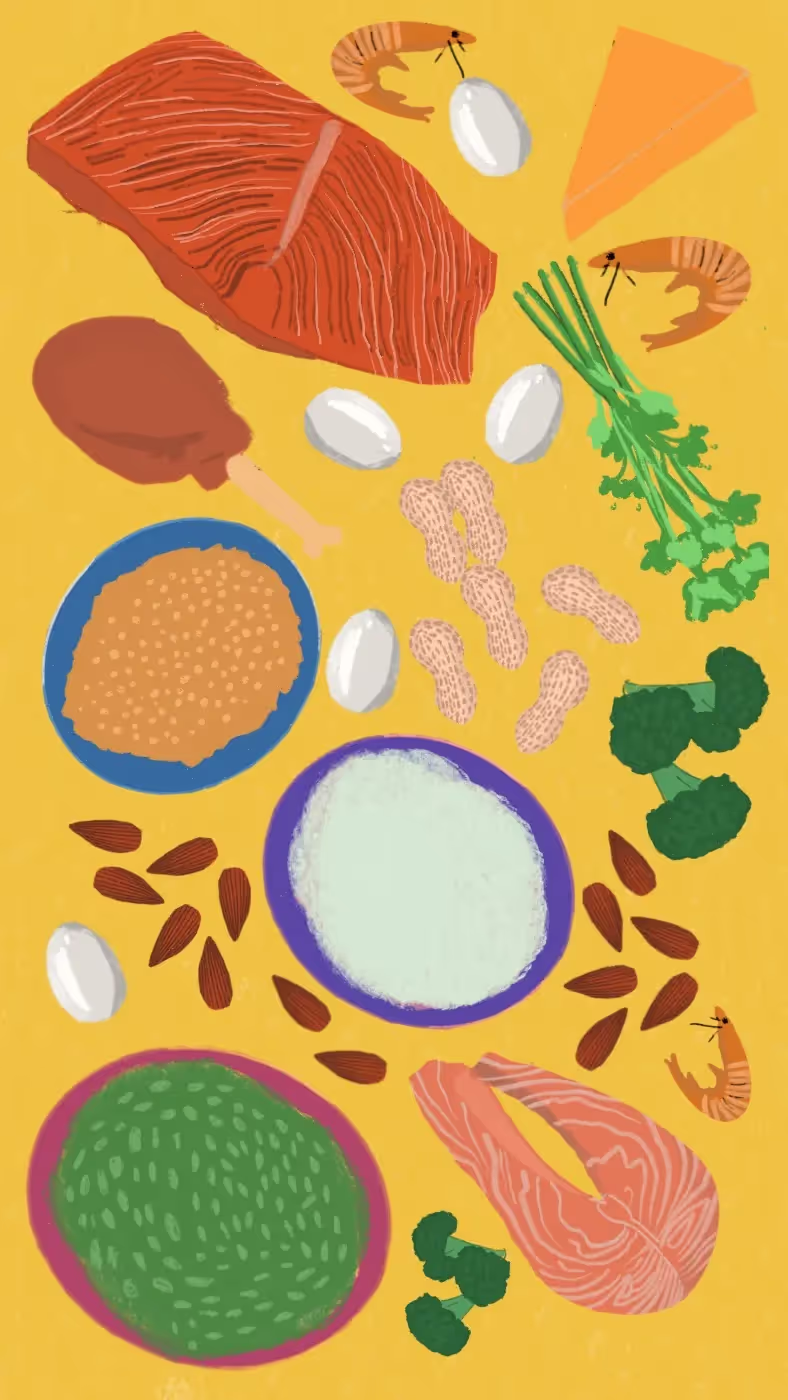

.avif)

.avif)
